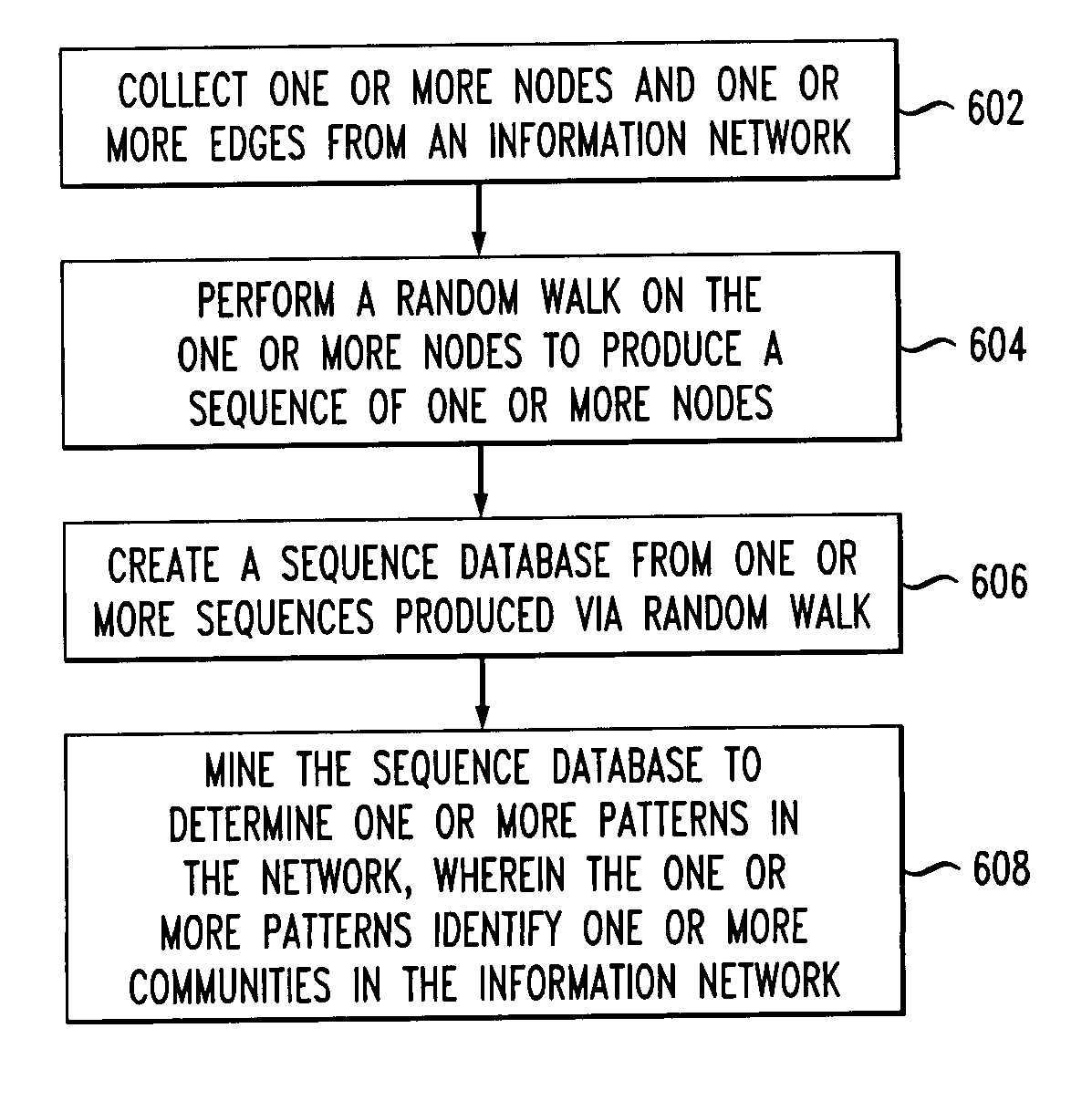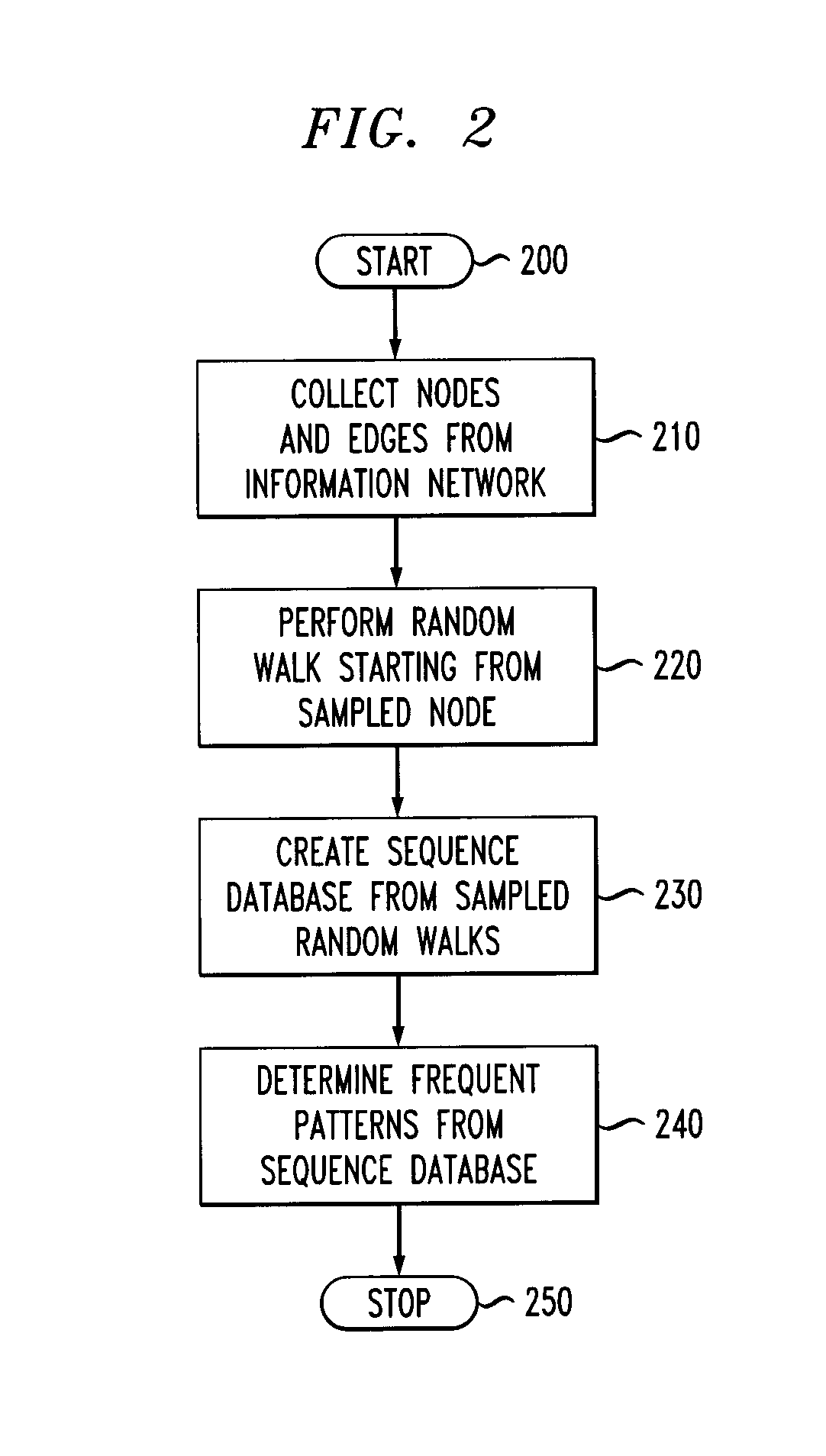Identifying communities in an information network
a technology of information network and community, applied in the field of information technology, can solve the problem that none of the techniques are designed for the problem of determining sparse communities
- Summary
- Abstract
- Description
- Claims
- Application Information
AI Technical Summary
Benefits of technology
Problems solved by technology
Method used
Image
Examples
Embodiment Construction
[0013]Principles of the invention include identifying sparse communities in an information network. As detailed herein, one or more embodiments of the invention include determining hidden or surprising communities in massive social networks (via, for example, a random walk approach). Such communities can be defined as those highly connected regions of a graph which use a relatively small number of edges compared to their connectivity level. Many forms of hidden communities (such as, for example, adversarial networks, newly forming communities, globally planned communities, etc.) may be aligned with this criterion.
[0014]By way of example, a social network can be represented as a graph, in which nodes represent users and links represent the connections between users. Community detection is closely related to network clustering, which includes determining the dense regions in the underlying network. Such dense regions are related to the challenge of community detection in massive netwo...
PUM
 Login to View More
Login to View More Abstract
Description
Claims
Application Information
 Login to View More
Login to View More - R&D
- Intellectual Property
- Life Sciences
- Materials
- Tech Scout
- Unparalleled Data Quality
- Higher Quality Content
- 60% Fewer Hallucinations
Browse by: Latest US Patents, China's latest patents, Technical Efficacy Thesaurus, Application Domain, Technology Topic, Popular Technical Reports.
© 2025 PatSnap. All rights reserved.Legal|Privacy policy|Modern Slavery Act Transparency Statement|Sitemap|About US| Contact US: help@patsnap.com



